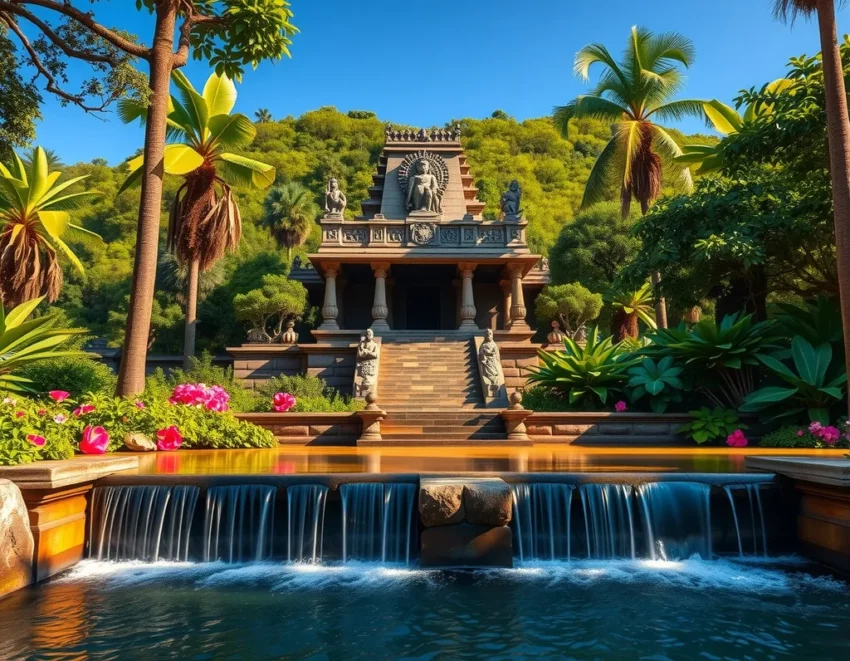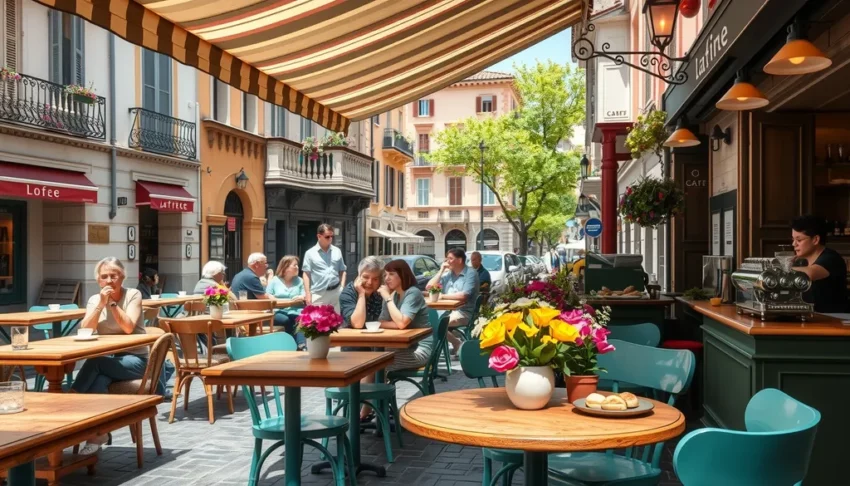Sunday, May 11, 2025

In a world where travel has become increasingly commodified, cultural tourism offers something far more rewarding—authenticity. Rather than collecting passport stamps, today’s mindful travellers are collecting stories, skills, and traditions that help them understand the world in a new way. These 12 cultural tourism destinations go beyond postcards and monuments. They invite visitors into living, breathing cultures that thrive on connection, ritual, creativity, and resilience.
Below is a detailed guide to the top 12 destinations where cultural tourism doesn’t just complement travel—it defines it.
1. Cuba – Music, Homestays, and the Soul of the Caribbean

Cuba stands as a cultural time capsule. From the pastel-colored 1950s Chevrolets lining Havana’s boulevards to the Afro-Cuban rhythms echoing through Trinidad’s cobbled streets, Cuba offers more than sightseeing—it offers immersion.
Cultural travellers can dance the night away to Mambo or Salsa in live music venues scattered across Santiago de Cuba and Havana. Visiting a ‘casa particular’ (private homestay) allows travellers to live alongside Cuban families, often over shared meals, political discussions, and music-filled evenings. Festivals like Carnival of Santiago and the Havana Biennial art event offer even more entry points into the nation’s vibrant identity.
Cuba also boasts nine UNESCO World Heritage Sites, including Old Havana and the Valle de Viñales. Each one is layered with stories of colonisation, revolution, and resilience. Museums, art schools, national parks, and tobacco farms each tell a different version of the Cuban experience—an experience that’s always warm, soulful, and undeniably human.
2. Ecuador – Indigenous Rituals and Colonial Charm

Ecuador is a land of contrasts, and its culture is no exception. From the highland Indigenous communities in the Andes to the Afro-Ecuadorian traditions along the coast and Amazonian tribal rituals deep in the jungle, Ecuador is a rich canvas of human experience.
A cultural trip here should include time in Quito, where colonial churches stand beside bustling Indigenous markets. During Holy Week, travellers can witness the awe-inspiring parade of purple-hooded devotees in the “Procesión Jesús del Gran Poder.”
Outside the capital, rural communities in the Amazon welcome guests for homestays. Here, travellers may participate in traditional healing ceremonies, learn about jungle medicines, and even take part in ritual dances or ayahuasca ceremonies (always with respect and proper guidance).
The Day of the Deceased (Día de los Difuntos) is another powerful moment to experience Ecuadorian culture. Families visit cemeteries, sing songs, and share food like colada morada and guaguas de pan—rituals that turn mourning into celebration.
3. The Big Island of Hawaii – Mythology Meets the Stars

The Big Island of Hawaii is more than just a beach destination. It’s a place where ancient Polynesian traditions are woven into the fabric of everyday life. This island is where the first Polynesian settlers landed, where kings ruled, and where the heavens meet the earth on Mauna Kea.
Cultural highlights include a visit to Pu’uhonua o Hōnaunau National Historical Park, a sacred refuge for those who broke ancient laws. Here, petroglyphs, royal fishponds, and reconstructed temples bring Hawaiian history to life.
Visitors can try their hand at traditional crafts like palm frond weaving or take workshops in Hawaiian chant and dance. A nighttime trip to Mauna Kea is both scientific and spiritual, as visitors stargaze from one of the world’s best observatories while learning how native Hawaiians navigated the Pacific using only the stars.
Hawaiian culture, passed down through generations, is visible in daily rituals, community farming practices, and ongoing efforts to preserve sacred lands.
4. French Basque Country – Europe’s Oldest Identity in Motion

Nestled between the Atlantic coast and the Pyrenees mountains, the French Basque Country offers a completely distinct culture within France. The Basque people are one of Europe’s oldest ethnic groups, with their own language, sports, music, and festivals.
Cultural tourism in the Basque region is hands-on and deeply rooted in local life. Watch—or join—a game of pelota in the village fronton, sample artisanal cheeses and cured hams at small-town markets, or attend one of the many “fêtes” that celebrate Basque identity with music, food, and traditional dress.
Bayonne’s famous summer festival, the Fêtes de Bayonne, draws over a million people each year for parades, bull races, and folk dances. And in Espelette, visitors can taste the spicy red pepper that’s a culinary symbol of the region.
The Basque Country invites travellers to engage with a culture that has proudly resisted assimilation for centuries.
5. Mauritius – An Island of Interwoven Cultures

Beyond its beaches and honeymoon resorts, Mauritius is a cultural mosaic of Indian, African, Chinese, and European influences. Each cultural strand is alive in the island’s languages, religions, food, music, and festivals.
Start with a street food tour of Port Louis, where dholl puri, Chinese noodles, and French pastries are sold side by side. Visitors can watch a Sega performance, a traditional Creole dance set to rhythmic drumming and vibrant lyrics. This dance, once a form of rebellion, is now a symbol of Mauritian identity.
Cultural tourism also includes visits to sugarcane estates and colonial plantation homes that document the island’s complex history with slavery and colonisation. In places like Frederica Nature Reserve, old cane fields have been repurposed as wildlife sanctuaries, symbolising a cultural and ecological revival.
6. Greece – Cradle of Democracy and Celebration

Greece is a cultural destination in every sense—from the myths of Zeus and Athena to Orthodox Easter celebrations that light up village skies with fireworks. Every stone tells a story, and every meal is a celebration.
Begin in Athens with a tour of the Acropolis, the Parthenon, and the Ancient Agora. Walk the same streets as Socrates, then visit a local taverna where live bouzouki music sets the tone for an evening of shared food and stories.
Easter in Greece is particularly vibrant. Towns like Corfu and Kalambaka celebrate with traditional music, processions, and massive community feasts. Meanwhile, islands like Crete and Naxos host traditional dances and craft fairs.
Whether it’s food, faith, or philosophy, Greece delivers it all with Mediterranean warmth and legendary hospitality.
7. Russia – Tradition in Grandeur

Russia’s cultural offerings are immense—from grand ballet stages and classical music halls to traditional rituals like the Russian banya. While modern politics can overshadow travel perceptions, cultural Russia is rich, resilient, and deeply moving.
In Moscow and St. Petersburg, travellers can watch performances at the Bolshoi or Mariinsky theatres. Museums like the Hermitage house some of the world’s greatest art collections. But culture also lives in the everyday—such as a steaming banya session followed by tea and storytelling.
New Year’s Eve is the most celebrated holiday in Russia, filled with toasts, traditions, and fireworks. Russian cuisine adds another layer: beetroot borscht, meat-filled pelmeni, black bread, caviar, and vodka are staples of cultural hospitality.
8. The Tibetan Plateau – Sacred Simplicity

High in China’s Sichuan province lies the Tibetan Plateau, where travellers can still witness a nomadic way of life that’s fast disappearing. Here, culture and spirituality are not tourist attractions—they are a way of being.
Langmusi, a town surrounded by mountains, hosts Tibetan monasteries, mosques, and cultural centers. It’s one of the few places where three ethnic groups—Amdo Tibetans, Hui Muslims, and Han Chinese—live together.
Visitors can go horse trekking with Tibetan guides, participate in local religious ceremonies, and visit families who still live in traditional yak tents. For those seeking a deeply immersive and contemplative experience, the Tibetan Plateau is unmatched.
9. Japan – Minimalism, Rituals, and Timeless Beauty

Japan is where every detail matters. Culture here is expressed through architecture, etiquette, craftsmanship, and rituals passed down over millennia.
In Kyoto, traditional ryokans (Japanese inns) allow visitors to sleep on tatami mats, soak in onsen baths, and dine on multi-course kaiseki meals. Tea ceremonies introduce guests to Zen philosophy and the aesthetics of wabi-sabi (beauty in imperfection).
Cultural events like Gion Matsuri or cherry blossom festivals connect people to nature, ancestors, and community. Whether exploring ancient temples or modern manga museums, Japan presents culture as a holistic experience that balances innovation with reverence for the past.
10. Kerala, India – Performing Arts and Tranquil Backwaters

Nicknamed “God’s Own Country,” Kerala blends spirituality, tradition, and tropical beauty. With its backwaters, spice plantations, and performing arts, Kerala is a cultural tourism haven.
Cruise through Alleppey on a traditional kettuvallam (houseboat) and witness life unfold along the canals. In Munnar, visit colonial-era tea plantations and learn how tea cultivation shaped local life.
Kerala’s performing arts are world-renowned. Watch Kathakali or Theyyam dancers perform ancient stories in elaborate costume and makeup. Visit Kochi during the Kochi-Muziris Biennale, South Asia’s largest contemporary art event.
Kerala’s culture, like its landscape, flows gently but deeply.
11. Portugal – Fado, Festivals, and Moorish Footprints

Portugal may be small in size, but it is immense in cultural richness. With its maritime legacy, layers of Moorish influence, and centuries-old traditions that persist vibrantly today, the country offers an exceptionally diverse cultural travel experience.
In Lisbon and Porto, ancient neighborhoods like Alfama and Ribeira brim with history. Narrow, cobblestone streets lead to fado houses, where Portugal’s traditional soul music—raw, melancholic, and poetic—is performed in intimate venues. Fado is more than a genre; it is an expression of Portuguese identity, designated by UNESCO as an Intangible Cultural Heritage.
Beyond music, Portugal’s Islamic heritage is evident in the architecture of towns like Mértola, where whitewashed walls and arched doorways reflect Moorish design. Every two years, the Islamic Festival of Mértola transforms the town into a living museum of Arab-Portuguese history with exhibitions, performances, and traditional crafts.
Cultural travellers can also explore UNESCO-listed sites such as the Monastery of Batalha or the historic town of Évora, which showcases Roman, Visigothic, Moorish, and Renaissance layers—all within walking distance. Portugal’s gastronomy, too, is cultural immersion at its finest—pastéis de nata, codfish recipes, and vinho verde enjoyed over hours-long meals in family-run restaurants.
12. Singapore – A Multicultural Tapestry in a Modern World

Singapore is a dynamic crossroads of Asian cultures, compressed into a sleek, modern city-state where tradition and innovation thrive side by side. Its cultural richness doesn’t stem from just one heritage—it’s the result of centuries of coexistence among Chinese, Malay, Indian, Eurasian, and Peranakan communities.
The city is structured around its cultural neighborhoods: Chinatown, Little India, Kampong Glam, and Joo Chiat. Each offers distinct architecture, festivals, cuisine, and crafts. In Chinatown, visitors can admire traditional shophouses and Buddhist temples. In Little India, the scent of jasmine and spices floats through markets, while henna artists and goldsmiths work their crafts.
A visit to Kampong Glam reveals the Islamic heritage of Malay culture, with the majestic Sultan Mosque at its heart and nearby cafes serving local Malay and Arab dishes. Joo Chiat, a vibrant Peranakan enclave, features pastel-colored homes and heritage museums that explore the unique blend of Chinese and Malay traditions.
Singapore also offers a calendar full of cultural events—Thaipusam, Chinese New Year, Hari Raya, and Deepavali are celebrated with equal zeal. Food is an essential part of the experience, and nowhere is multiculturalism more delicious than in its hawker centers, where Michelin-rated meals are served from humble stalls.
Through its commitment to cultural preservation and innovation, Singapore delivers one of the most accessible, safe, and layered cultural experiences in the world.
Final Reflection: Why These 12 Destinations Matter
Cultural tourism is the antidote to superficial travel. It demands patience, humility, and a willingness to engage—not just observe. These 12 destinations, from the sacred volcanoes of Hawaii to the festivals of Portugal, and from the backwaters of Kerala to the street food lanes of Mauritius, invite travellers to participate in centuries-old stories still unfolding in real time.
Whether you’re drawn to ancient rituals, artisan crafts, spiritual ceremonies, or living histories, cultural travel transforms a trip into a journey of personal growth. As you plan your travels in 2025 and beyond, consider these places not just as destinations, but as invitations—to learn, to share, and to be forever changed.
Tags: Africa, Asia, china, Cuba, cultural tourism, ecuador, Europe, france, greece, India, japan, mauritius, north america, Portugal, Russia, Singapore, south america, Tourism news, Travel News, United States







